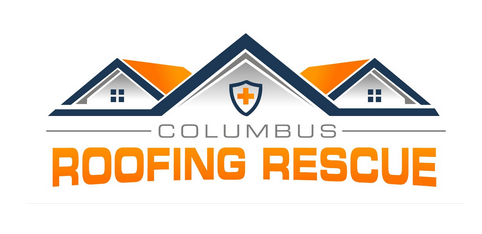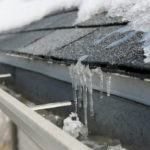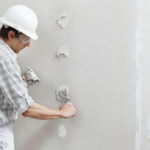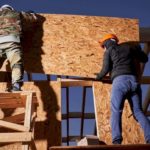
Signs Your Attic Needs Better Insulation
As we enter the colder months, ensuring your home is insulated is crucial to keep the heat from seeping out and the cold air out. The area of your house that is often overlooked is the attic, which can be a significant source of heat loss if not properly insulated. According to the Department of Energy, a poorly insulated attic can result in up to 25% heat loss. Don’t let your heating bills skyrocket this winter – it’s time to check if your attic is adequately insulated. In this article, we’ll look at the top 5 signs that your attic needs better insulation. From high energy bills to drafty rooms, we’ll help you identify if your home needs some extra insulation and explain how you can take action to keep your home warm and cozy all winter long.
The Importance of Attic Insulation
Attic insulation is essential to any home’s heating and cooling system. With proper insulation, the heat from your furnace or air conditioning unit can easily escape through your roof, leaving your home feeling dry, cold, and uncomfortable. Not only does this mean higher electric bills, but it can also put strain your HVAC system and reduce its lifespan.
Attic insulation acts as a barrier, preventing heat from escaping through your roof and keeping your home at a comfortable temperature. In addition to keeping you warm and snug in the winter, insulation can help keep your home cool in the summer by preventing hot air from entering your living space.
Signs Your Attic Needs Better Insulation
Now that we understand the importance of attic insulation let’s look at the top 5 signs that your attic may need extra insulation.
High Energy Bills

One sign that your attic needs better insulation is a drastic increase in your electric bill. If you’ve noticed that your heating bills have skyrocketed in recent months, your home is likely losing heat through your attic. This is because your furnace has to work harder to keep a comfortable temperature, resulting in higher bills.
Uneven Temperature Distribution
Another sign that your attic needs better insulation is uneven temperature distribution throughout your home. If some rooms are significantly colder than others, it’s likely that heat is escaping through your attic. Heat rises, of course, so if your attic is not adequately insulated, it will escape through your roof and leave your lower floors feeling cold and drafty.
Presence of Pests
If you’ve noticed increased pests in your home, it could indicate that your attic needs better insulation. Problems such as mice, rats, and squirrels are attracted to warm spaces, and an uninsulated attic provides the perfect environment for them to nest. Pests can also cause damage to your home’s insulation, resulting in even more heat loss.
Ice Dam Formation
In colder climates, ice dams are a common problem indicating poor attic insulation. Ice dams will form when snow on your roof melts and then refreezes at the eaves of your roof, preventing water from draining correctly. This can and will cause water damage to your roof and walls and indicate that heat is seeping through your attic and melting the snow on your roof.
Mold Growth
Finally, mold growth in your attic can indicate that your attic needs better insulation. Mold thrives in warm, moist environments, and an uninsulated attic can provide the ideal conditions for mold to grow. If you’ve noticed mold growing in your attic, fixing this mold issue as soon as possible is very important to prevent it from spreading to other areas of your home.
How to Improve Attic Insulation
If you’ve identified any of the above signs, it’s time to improve your attic insulation. Here are some important things you can do to improve your home’s insulation:
Hiring a Professional for Attic Insulation
The best way to improve your home’s attic insulation is to hire a professional contractor. They will be able to inspect your attic and recommend the best insulation for your home. They will also install the insulation, ensuring that it is properly sealed and installed to prevent any air leaks.
DIY Attic Insulation
You can improve your attic insulation through a DIY project if you’re on a tight budget. Many types of insulation are available at your local hardware store, including fiberglass batting, blown-in insulation, and spray foam insulation. However, it’s important to note that DIY insulation projects can be hazardous and may not be as effective as professional insulation installation.
Spray Insulation vs. Rolled Insulation: Which One is Right for You?

When it comes to your attic insulation, there are many options available in the market. Two of the most popular types of attic insulation are spray insulation and rolled insulation. Both will have advantages and disadvantages.
What is Spray Insulation?
Spray insulation is a type of insulation that is applied using a spray machine. It’s made up of a mixture of chemicals sprayed onto the surface in a liquid form, which then expands and hardens, creating a seal over the surface. Spray insulation is commonly used in attics, walls, and floors.
Advantages of Spray Insulation
One advantage of spray insulation is the speed of installation. Spray insulation can be applied quickly and easily, forming a seamless seal that prevents air leaks and helps to reduce energy costs. Spray insulation is also excellent for filling in small gaps and cracks, and this helps create a complete seal, reducing the air that can escape.
Another advantage of spray insulation is that it can be applied to various surfaces. Spray insulation can be used on any surface, including walls, floors, and ceilings, making it a versatile option for homeowners who want to insulate their whole home.
Disadvantages of Spray Insulation
One of the main disadvantages of spray insulation is the cost. Spray insulation can be more expensive than rolled insulation, and this is because it requires special equipment and trained professionals to apply the insulation. Additionally, the cost of spray insulation can vary depending on the size of the area that needs to be insulated.
Another disadvantage of spray insulation is the potential for moisture buildup. Spray insulation can trap moisture in the walls or ceiling, leading to mold and other problems. This can be prevented by using a vapor barrier, but this can add to the installation cost.
Finally, spray insulation can be messy. The chemicals used in spray insulation can be challenging to clean up if they are not appropriately applied, which can damage furniture or other items in the home.
What is Rolled Insulation?

Rolled insulation, also known as blanket insulation, is made of fiberglass or mineral wool. It comes in large rolls that can be cut to fit any space. Rolled insulation is commonly used in attics, walls, and floors.
Advantages of Rolled Insulation
One of the most significant advantages of rolled insulation is the cost. Rolled insulation is generally less expensive than spray insulation, and this is because it does not require special equipment or trained professionals to install it. Additionally, the cost of rolled insulation is fixed, making it easier for homeowners to budget.
Another advantage of rolled insulation is that it is easy to install. Rolled insulation can be cut to fit any space, making it an excellent option for homeowners who want to insulate their homes. Additionally, rolled insulation can be installed over existing insulation, making it an excellent option for homeowners who want to add more insulation.
Finally, rolled insulation is an excellent option for those who want to reduce outside noise. Rolled insulation helps to absorb sound, making it a great choice for those who live in noisy areas.
Disadvantages of Rolled Insulation
One of the main disadvantages of rolled insulation is that it can be hard to install in tight spaces. Rolled insulation is not as flexible as spray insulation, making it difficult to install in small or tight spaces. Additionally, rolled insulation can be bulky, making it difficult to transport and store.
Another disadvantage of rolled insulation is that it can be less effective at preventing air leaks. Rolled insulation can be harder to fit into small gaps and cracks, leading to air leaks and higher energy costs.
Finally, rolled insulation can be a fire hazard if not installed correctly. Rolled insulation is made of flammable materials, which can lead to a fire if it’s not installed properly.
Factors to Consider when Choosing between Spray and Rolled Insulation
When choosing between spray and rolled insulation, several factors must be considered. The first thing to consider is the cost. Spray insulation can be more expensive than rolled insulation but can also be more effective at preventing air leaks and reducing energy costs. Rolled insulation is generally less costly but may be less effective at preventing air leaks.
The second thing to consider is the ease of installation. Spray insulation requires special equipment and trained professionals to install, while homeowners themselves can install rolled insulation. This can save homeowners money on installation costs, but it may also lead to a less effective insulation seal.
The third factor to consider is the type of space that needs to be insulated. Spray insulation is excellent for filling in small gaps and cracks, making it a great option for attics and walls. Rolled insulation is better suited for larger spaces like floors and ceilings.
Cost Comparison between the Two Types of Insulation
The insulation cost can vary depending on the size of the area that needs to be insulated and the type of insulation used. Generally speaking, spray insulation is more expensive than rolled insulation. The cost of spray insulation can range from $1.50 to $3.50 per square foot, while the cost of rolled insulation can range from $0.30 to $0.60 per square foot.
The installation cost should also be considered when comparing the two types of insulation. Spray insulation requires special equipment and trained professionals to install, which can add to the installation cost. Homeowners can install rolled insulation, which can save money on installation costs.
Conclusion and Final Thoughts
Spray insulation is an excellent option for those who want to reduce energy costs and prevent air leaks, and it is also a perfect option for those who want to reduce their carbon footprint. Rolled insulation is an excellent option for those who want to save money on insulation costs and want an easy-to-install insulation option.
No matter what type of insulation you select, it is important to make sure that it’s installed properly to ensure maximum effectiveness. Proper installation can help to prevent air leaks, reduce energy costs, and create a more comfortable living environment.



